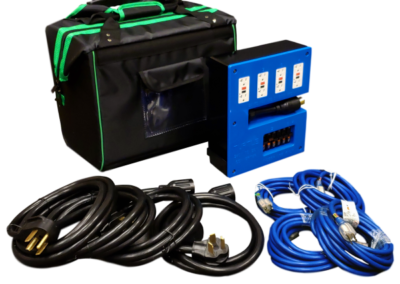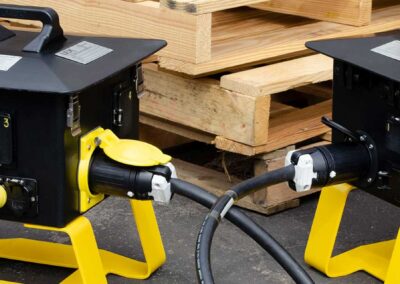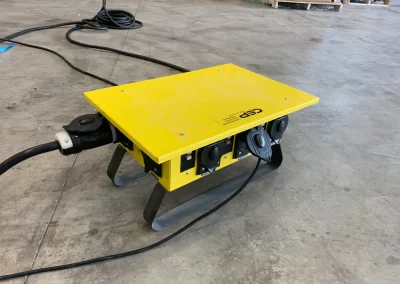Power BOX
Electrical power management can be very difficult during a restoration project, even a small project. Restoration requires many pieces of equipment, as well as normal power tools for technicians to use. Most homes and smaller commercial properties typically do not have enough circuits to handle the amount of power we will temporarily use when we are going through the emergency restoration process at your property. Power Boxes provide this solution. A power box can be hooked into a property by means of a large plug (such as a dryer or range), direct connection to the main panel, or even connected to a large generator if the power to the structure is inadequate. These typically can handle up to 50amps of incoming power, and they distribute that 50amps down into smaller circuits located around the edge of the unit into separate 20amp circuits that equipment can use. This isn’t an abnormal situation, as most buildings are not designed to accommodate the amount of equipment necessary during a disaster, but a powerbox can simply take one very large circuit and convert it to many smaller ones we can use. These units can also be daisy-chained, meaning we can connect multiple power boxes together in a row and spread the available power and circuits out across a very large area. This can be particularly useful in expansive commercial buildings where the available power is a long distance from the damage. In this case, we can run one single larger cable from the available power to the area of damage and then access it through the powerbox.



